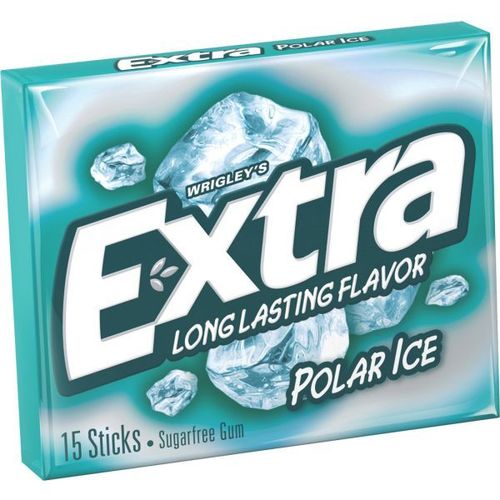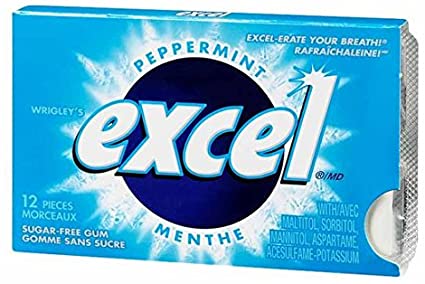We all love chewing gum, isn’t it? The sweetness of the gum refreshes our mouth and mind instantly. However, we are also aware of the fact that our digestive system cannot handle gum. So, we spit it out eventually, when the sweetness of the gum fades off. Most of the gums that we know of use a sweetener called xylitol. Apart from gums, xylitol is also used in fruit juices, mouthwashes, toothpastes, and other sweet edible products.
Xylitol is perfectly safe and even healthy for humans, because it is a sugar substitute. It contains almost 70% less carbohydrates and 40% less calories than sugar. Mushrooms, lettuce, plums and berries are some of the natural and tasty sources of xylitol. If you have cats at home, you are always tempted to feed them some human foods.
Your cat loves to eat whatever you eat, and it loves to lick or nibble your food from your hands. So, can you give gums to cats, too? Of course, not! Xylitol, which is a perfectly harmless compound for humans, is highly toxic for cats. In some severe cases, xylitol poisoning can lead to liver damage and death as well. Keep reading to know more about why gums are dangerous for cats and the health risks you should be aware of before giving gums to cats.
Xylitol – What is it all about?
Xylitol is an artificial sweetener that is used in many dishes and household products today. It is a type of polyalcohol and it tastes sweet. In humans, xylitol has proved to be quite healthy, as it doesn’t bring about any imbalances in blood sugar levels. It also reduces the risk of cavities, which is why it is quite popular among humans.
However, xylitol is considered to be very toxic for cats. We will explain more about this point in the later sections. Xylitol poisoning is very common among cats today. It can lead to liver damage and a severe drop in blood sugar levels. Your cat may require several days of hospitalization, IV fluids and emergency procedures to get back to normalcy.
Unfortunately, most of the sugar-free gums that are available in the market today contain xylitol. Therefore, you should keep gums quite far away from your feline friends. If your cat has accidentally swallowed gum, please don’t waste any time rushing it to the veterinarian. If the vet can pull out the gum from the cat’s system before the animal has swallowed it, you can prevent your cat from severe health hazards.
Health risks associated with gums for cats

Gum can pose many health risks to cats. This is why it is considered one of the top toxic foods for felines worldwide today. According to experts, you have to rush your cat to a vet immediately, if you suspect it has swallowed gum. That’s the only way to get it back in proper condition in a few days. Else, the effects of the gum can start to show in about 30 minutes in the cat. The common health risks that cats can be exposed to if they ingest gums are:
Choking
Why do we spit out gums? We know that our digestive system is not equipped enough to handle this sticky and chewy substance. When we accidentally swallow gum, we experience difficulty breathing when the gum gets stuck inside our windpipe. We try different techniques to push the gum inside our throats, so that we don’t experience choking.
Unfortunately, cats are not aware that they have to spit out the gum. When they ingest the gum, it gets stuck inside their throats. Since their digestive system is far more sensitive than ours, it causes choking. Your cat starts to panic and experience difficulty in breathing. It starts to heave rapidly. When you notice this, be calm and try to see if you can spot the gum inside your cat’s mouth. If you can, pull it out quickly.
If you cannot spot the gum, please don’t try any other techniques like putting your fingers deep inside your cat’s throat to get the gum outside. You may cause more harm than good to your felines when you do this. Rush your cat to its vet immediately. The doctor may perform an emergency procedure and get the gum out of the cat’s system. However, if the cat has already swallowed the gum, it causes other severe health issues like the following.
Intestinal Obstruction

When the gum gets stuck inside the cat’s digestive system, it may cause a lot of discomfort to the cat. The cat finds it extremely difficult to pass stools. So its litter will contain only urine for many days, until it is under treatment for getting the gum out of this body.
The vet may conduct many tests and scans to find out the exact location of the gum inside the cat’s body. During the days of treatment, the cat passes a lot of urine. So, it can suffer from dehydration and weight loss. Since the gum disrupts intestinal functions, the cat could also vomit more frequently during this period.
Hypoglycemia
This is the most serious health hazard that cats may suffer from, when they ingest gums. This condition is caused due to the artificial sweetener, xylitol, used in gums. When the cats ingest xylitol, the effect is immediately felt in their pancreas. The release of insulin from the pancreas to the other parts of the body is stimulated at a great pace due to the ingestion of xylitol. Insulin is the hormone that regulates the blood sugar levels of the body.
When the release of insulin is stimulated, it causes the cat’s blood sugar levels drop to dangerously low levels. This leads to a condition known as hypoglycemia. The blood sugar drops within 30 to 60 minutes of ingestion of xylitol.
Final Word
You should never give gums to cats. The xylitol content in gums is very dangerous and fatal for cats. After a series of treatments, emergency procedures and blood sugar monitoring, the veterinarian may be able to take out the xylitol from the cat’s system. However, they cannot reverse the liver damage that xylitol causes. Therefore, please observe your cats regularly for signs of choking, seizures, or difficulty in walking. If you spot these, please rush them to the vet immediately.
